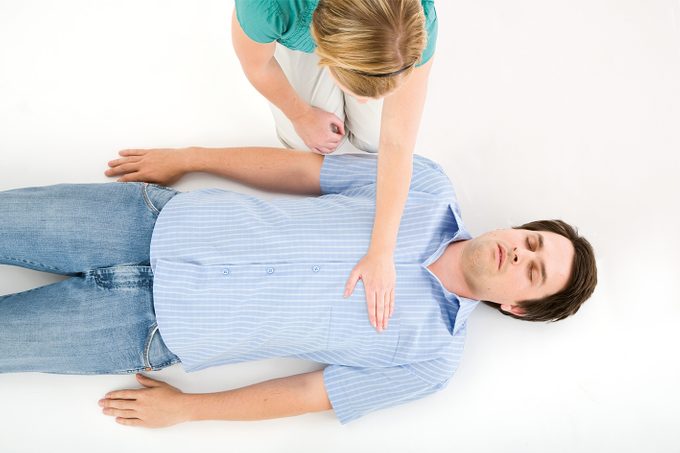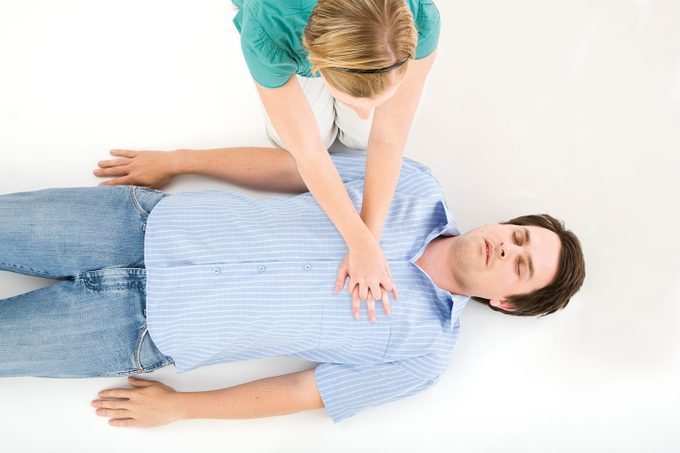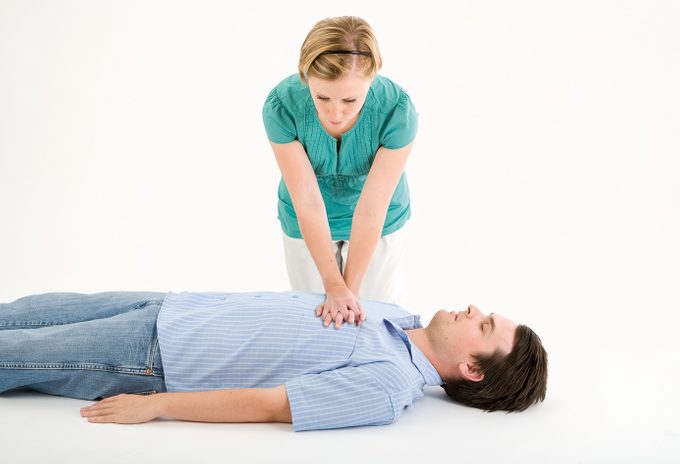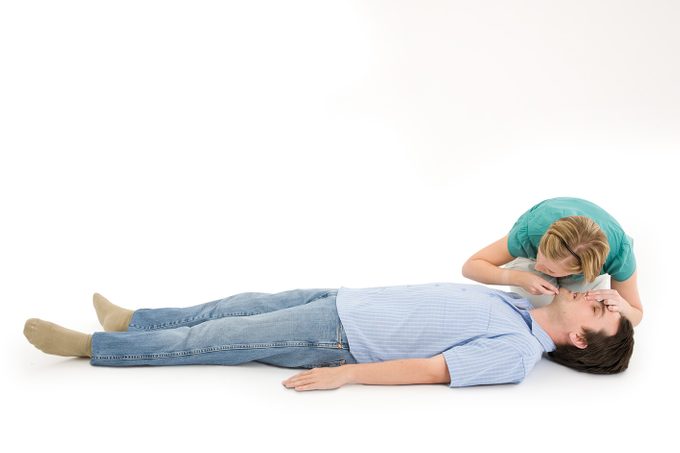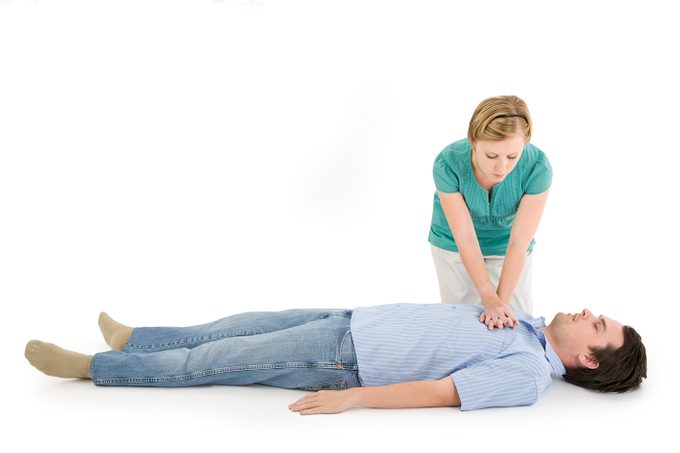The CPR Steps Everyone Should Know

Doing CPR right away can double or even triple a person’s chance of surviving cardiac arrest. Learn these CPR steps now so you know what to do if someone if ever experiencing a life-threatening emergency.
When a person has a cardiac arrest, the heart quivers with uncoordinated contractions and is unable to pump blood; the person will lose consciousness and their heartbeat will stop. These CPR steps (chest compressions and rescue breaths) will help circulation and get oxygen into the body until an emergency responder can shock the heart back into a normal rhythm. Early use of an AED (automated external defibrillator), if one is available, can restart a heart with an abnormal rhythm. (AEDs are often found in malls, sports arenas, gyms, and other public places for just this purpose, and can be used by anyone who follows the instructions.)
See someone who looks like they might need CPR? You first need to make sure it’s safe to approach. If it is, tap the person’s shoulder and ask if they’re okay. If they don’t respond, open their airway to check if they are breathing (don’t begin CPR if a patient is breathing normally). Then, get help. If you’re not alone, ask someone to call 911 for help as soon as you have checked breathing, and have the person confirm the call has been made. While help is on the way, follow these CPR steps:
1. Position your hand
Make sure the patient is lying on his back on a firm surface. Kneel beside him and place the heel of your hand on the center of the chest.
2. Interlock fingers
Keeping your arms straight, cover the first hand with the heel of your other hand and interlock the fingers of both hands together. Keep your fingers raised so they do not touch the patient’s chest or rib cage.
3. Give chest compressions
Lean forward so that your shoulders are directly over the patient’s chest and press down on the chest about two inches. Release the pressure, but not your hands, and let the chest come back up.
Give continuous compressions at a rate of 100 compressions per minute. Not sure what that really means? Push to beat of the Bee Gees song “Stayin’ Alive” or Beyoncé’s “Crazy In Love.” To make sure you’re prepared, find out what a nurse keeps in her first-aid kit at home.
Note: Learn more about “Compression-Only CPR” from the Canadian Red Cross.
4. Open the airway 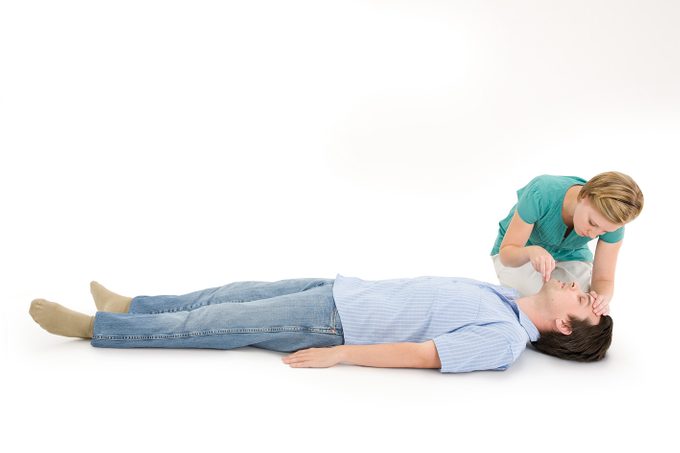
Move to the patient’s head. Tilt his head and lift his chin to open the airway again. Let his mouth fall open slightly.
5. Give rescue breaths
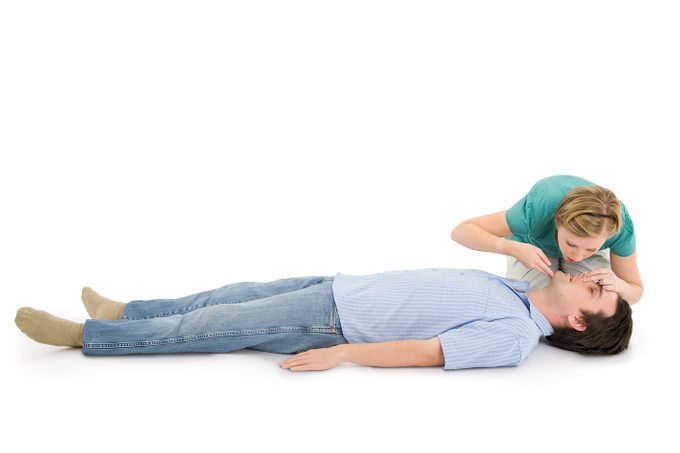
Pinch the nostrils closed with the hand that was on the forehead and support the patient’s chin with your other hand. Take a normal breath, put your mouth over the patient’s, and blow until you can see his chest rise.
(Psst: Watch out for these signs of a stroke you could be ignoring.)
6. Watch chest fall
Remove your mouth from the patient’s and look along the chest, watching the chest fall. Repeat steps five and six once.
7. Repeat chest compressions and rescue breaths
Place your hands on the chest again and repeat the cycle of 30 chest compressions, followed by two rescue breaths. Continue the cycle.
Medically reviewed by Oscar H. Cingolani, MD.
Next, learn which daily habits are sabotaging your health.
